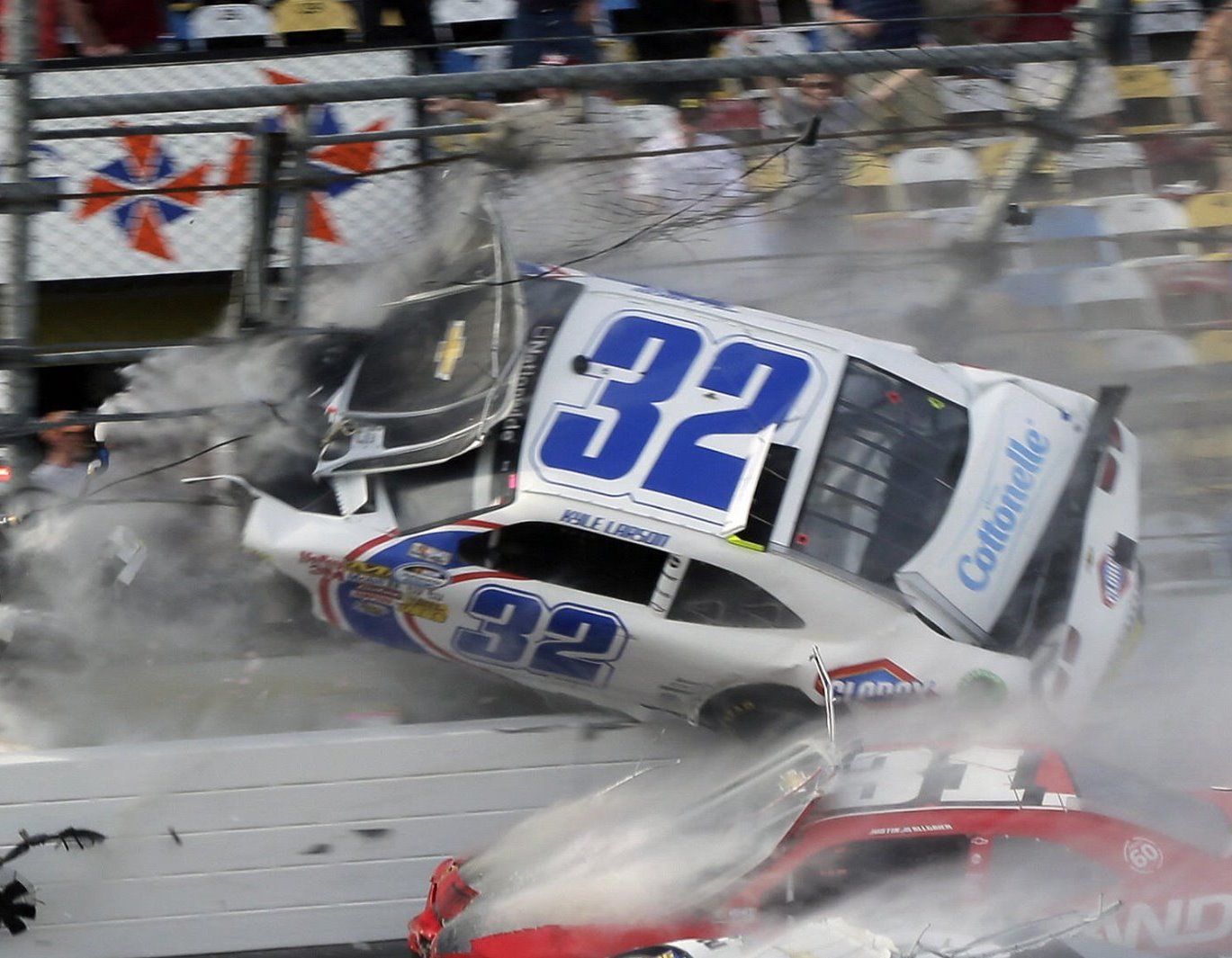NASCAR has no perfect way to protect spectators
 |
| No. 32 Kyle Larson |
Here's the problem with finding a solution to what happened Saturday at Daytona International Speedway:
It won't happen again.
That's not to say the leader of a race won't try to block, that 12 cars won't wreck, that one won't go airborne or that a gate in a fence won't be hit. You could comfortably bet on any of them occurring individually.
But those factors won't intersect in precisely the same way that ripped apart a car and spewed parts, including the engine and a wheel, through and over the fence. Something else will wreak havoc and injure fans at a NASCAR race.
Attempting to protect spectators is a crucial pursuit. It's also, for the most part, futile.
"We can't predict what the next bad thing to happen is," said Diandra Leslie-Pelecky, professor of physics at West Virginia University who was raised in Brookfield.
"Think back to when you could get on an airplane carrying a box cutter. Now we sit back and go, what were we thinking? Why did we ever think that was OK?
"It's a real change. Something happened, and then we realize, 'Wow, that's something we need to worry about.' But to try to predict it in advance is really hard."
Within moments of Kyle Larson's accident, the usual suggestions cropped up: a taller fence, a stronger one, two fences with a no-man's land between, a clear barrier like you'd find at a hockey rink.
More likely, Leslie-Pelecky said, is that a system that would have helped in a case like Saturday has yet to be invented.
"If you look at how the SAFER barrier came about, it came about only because IndyCar and NASCAR put their heads together and their wallets together and did a lot of research," said Leslie-Pelecky, author of the book "The Physics of NASCAR: The Science Behind the Speed."
"The SAFER barrier was a brand-new concept. It wasn't an evolution of what we had been doing in barriers. That only happens because people turn their minds to it, and it took them 10 years to really perfect the barriers."
Even those so-called soft walls could use work. Drivers have called for the SAFER system on every inside wall, but one of the key elements of the barriers is that they have a continuous surface that allows vehicles to slide along them. That causes problems for rescue and cleanup personnel, who need to be protected but also need quick access to the racetrack.
Beyond the fences, NASCAR could require tracks such as Daytona to reduce the banking. It could tweak the cars to slow them down or break up the packs or it could institute stricter rules against the sort of blocks Regan Smith threw on Brad Keselowski that triggered the most recent melee.
But all of those changes would have unintended consequences, too.
Look at the Daytona 500. As big-track races typically go – and even the Nationwide race the day before went – the 500 was a ho-hum parade, not the sort of event that would rile up fans to return or to tune in for the rest of the season.
See, if changes in the name of fan safety turn away enough fans, then there will be no one left to protect. JSOnline.com
